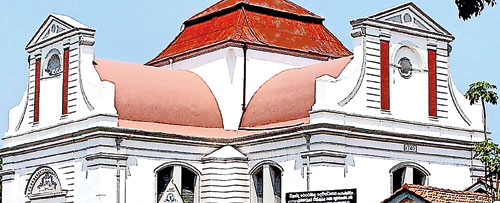Sunday Times 2
Global experts join Lankan architects to promote our urban heritage
View(s):Historic places connect our past with our present and with our future. They help form our individual and collective identities and contribute to a sense of place and belonging. But in the race to build tomorrow’s city, the fate of Colombo’s past is at stake. Living Heritage, from November 2-6 is a collaboration between Sri Lankan architects, the European Union, the Netherlands Embassy and the French Embassy, with support from the Alliance Française and the British Council, that aims to showcase and promote awareness of the value of urban heritage, highlighting the way in which it could and should be a part of the Colombo of tomorrow.
From the colonial period through to the recent past, Colombo has many rich and varied buildings that provide a window to understand important periods in the city, and by extension Sri Lanka’s evolution. Buildings such as the Legislative Council Building at the Fort, built during the British period and today housing the Ministry of Foreign Affairs, and the Wolvendaal Church built by the Dutch on the site of a Portuguese church in 1749, speak of both the colonial encounter and how Sri Lanka asserted its independence.
From the post-independence period, globally important work by Sri Lankan architects is being lost or at risk from gung-ho development. Some of legendary architect Geoffrey Bawa’s buildings are well-preserved thanks to the efforts of bodies such as the Bawa Trust, but others are at risk and action is required before it is too late. Unfortunately, it is already too late to preserve some of the best examples of work by Minette de Silva and Valentine Gunasekara.
The day-long seminar on November 2 at the Galle Face Hotel will explore questions about the role of heritage in the city of tomorrow. Speakers from India, France, the Netherlands, the UK and Sri Lanka will discuss the challenges of imagining and building in the urban context while valuing and readapting the past. The presentations will be followed by a panel discussion. An important focus of the seminar will be looking at Sri Lanka’s colonial and post-independence architecture and looking at examples, such as the Old Dutch Hospital and Gallery Café, that have been reworked in a sympathetic way to provide some of the most popular and engaging spaces in the city.

Wolvendaal church in Colombo
Beyond the seminar, a series of events will be held to promote awareness of the issues raised. On November 3, architectural expert and critic David Robson will launch his latest book – “In Search of Bawa” – at the Barefoot Gallery and on November 4, lead a bus tour around Colombo, entitled ‘Bawa at Risk’. The tour will take in some of the most well known exemplars of Bawa’s architecture, but also focus on some of the lesser known sites whose future is in peril.
On November 4, Dr. Lodewijk Wagenaar, a Dutch historian and former curator of the Amsterdam Museum, will launch his book “Cinnamon and Elephants” about the history of the Dutch period at the Dutch Burgher Union Hall. Lodewijk will be signing copies on November 5 at Barefoot.
On November 5, Channa Deswatte will lead a tour of Geoffrey Bawa’s estate Lunuganga and on November 6, Anjalendran will take a select group on a tour of Fort. To join the excursions please email delegation-sri-lanka-press-and information@eeas.europa.eu with the excursions you would like to join in order of priority..

